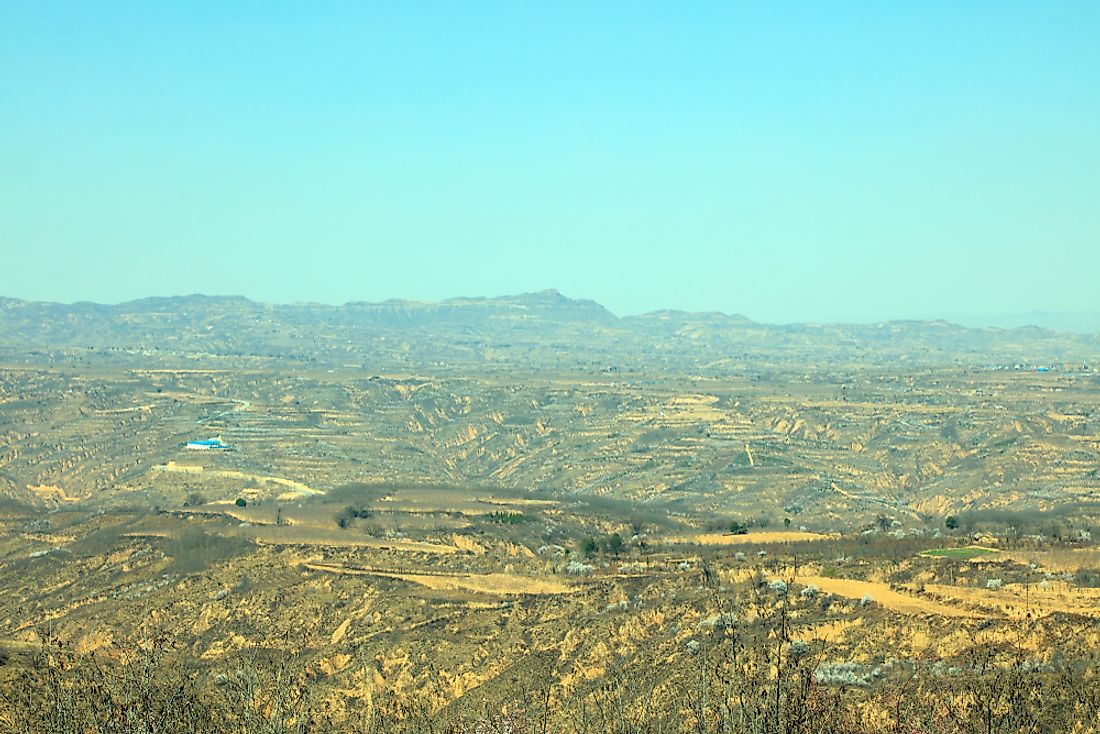Where is the Loess Plateau?

The Loess Plateau is a plateau or high plain that covers more than 250,000 sq mi in the middle and upper reaches of the Yellow River in China. Also referred to as the Huangtu Plateau, the plateau encompasses the following provinces: Gansu, Shanxi, Shaanxi, Ningxia, and the autonomous region of Inner Mongolia. Over 50 million people live on or are dependent on the plateau, which was once covered in fertile soil that was ideal for agriculture. However, centuries of overgrazing, deforestation, and population pressure resulted in the degradation of the ecosystem, and finally to desertification. In fact, the plateau's soil is considered to be the most highly erodible soil on Earth.
Degradation of the Loess Plateau
In 1963, floods devastated the village of Dazhai, which is located within the plateau, leaving thousands of people homeless and without a source of income. The local Communist Party promised to establish new and productive villages under the "Learn from Dazhai under agriculture" campaign. The restoration program included clearing vast land for agriculture to create self-employment opportunities for local populations. The initial success of the plan prompted other neighboring villages to adopt the same program, and within ten years the entire plateau had been converted to agricultural farms. However, wind and floods eroded the soil, flushing out nutrients and other organic matter. Farmers worked tirelessly to create new terraces, but they were subsequently worn away in an endless cycle of erosion. By the early 1980s, the once productive fields had turned into barren land that could not support agriculture or human habitation. Cultivation, overgrazing, and the deforestation of the plateau led to the impoverishment of the local population, placing more than 90 million people in an endless cycle of poverty. In 1981, the government launched a campaign designed to reforest the plateau by increasing its forest cover from 8.6% to 18.2% in less than 20 years. However, planting trees was not enough to reduce soil erosion and improve agricultural production. In 1994, the Loess Watershed Rehabilitation Project was introduced, and included planting trees, shrubs, grass, built gabions and retention dams, and enforced zero grazing policies.
Restoration of the Loess Plateau
By 2005, the rehabilitation project had resulted in some level of improvement, as more trees and grass remain green. Although the Chinese government no longer plays an active role in managing the erosion, sustainable policies by local governments, the participation of local communities, technical support, and improved agricultural systems continue to rehabilitate and improve the plateau. Agricultural income has improved considerably and more than 20 million people have been lifted out of extreme poverty. In addition, bans on field grazing and deforestation have increased perennial vegetation to 34%. The World Food Programme and the World Bank continuously engage local populations and support environmental development in the region to avoid a potential food shortage crisis.











